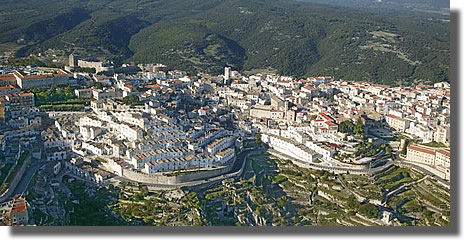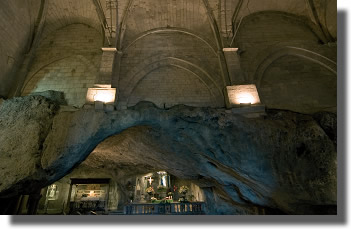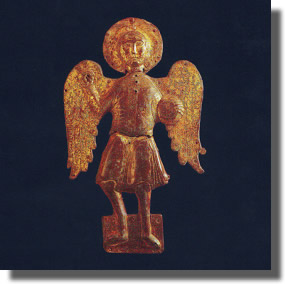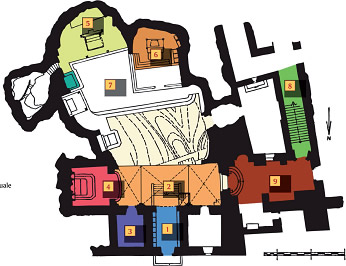MONTE SANT'ANGELO
The Site
After 650, the Longobards from Benevento widened the territory of the Duchy by means of annexing the Gargano region, where the cult of the Archangel Michael was established from the 5th century onwards; such cult proved to be congenial to the sensitivity of the Longobards, for it showed attributes and characteristics of the pagan Woden, considered the supreme God, the god of war, psychopomp, protector of heroes and warriors.



From the 7th century, the Gargano Sanctuary became the national Sanctuary of the Longobards and the most important place of worship of Saint Michael, deeply influencing the spread of the devotion for St. Michael in the Western Europe and becoming a model for the hundreds of Sanctuaries dedicated all over Europe, including the most famous Mont Saint Michel on the border of Brittany.


 The cult of S. Michael the Archangel gave rise to a conspicuous heritage of faith, art and culture between the 6th and 8th centuries, leaving evidences in the folk traditions – still alive in the never ended devotion to the Angel – in the anthroponym, in the material culture.
It was a heterogeneous environment from the social point of view, by ethnicity, by the pilgrims’ provenance, that shows how central the role of the Apulian Sanctuary was, in relation to not only the Longobards.
The cult of S. Michael the Archangel gave rise to a conspicuous heritage of faith, art and culture between the 6th and 8th centuries, leaving evidences in the folk traditions – still alive in the never ended devotion to the Angel – in the anthroponym, in the material culture.
It was a heterogeneous environment from the social point of view, by ethnicity, by the pilgrims’ provenance, that shows how central the role of the Apulian Sanctuary was, in relation to not only the Longobards.
With the Longobards, however, it became one of the most important places of worship in Christendom and was an international destination of pilgrimage, one of the last stages on the road that lead to the Holy Land, coinciding with the ancient route of the Trajan Way in Southern Italy, which since then took the  name of Via Sacra Langobardorum.The anthropic structures that redefined for liturgical reasons the natural cave and the exceptional epigraphical body on display on the Sanctuary’s columns and capitols, allow to reconstruct an extraordinary context, a meeting place of different realities.
name of Via Sacra Langobardorum.The anthropic structures that redefined for liturgical reasons the natural cave and the exceptional epigraphical body on display on the Sanctuary’s columns and capitols, allow to reconstruct an extraordinary context, a meeting place of different realities.
The main Longobard dynasties, the Dukes of Benevento but also those of Pavia and Brescia – as testified by inscription (graffiti) preserved in loco - gave life to vast monumental reconstruction works at the Sanctuary, to facilitate access to the primitive grotto and provide hospitality for pilgrims.
Planimetry of Sanctuary today1. Choir |
 |
The historical-cultural heritage that can be ascribed to the Longobard period – and today still living -represents a unique evidence in the definition of Longobard history.


